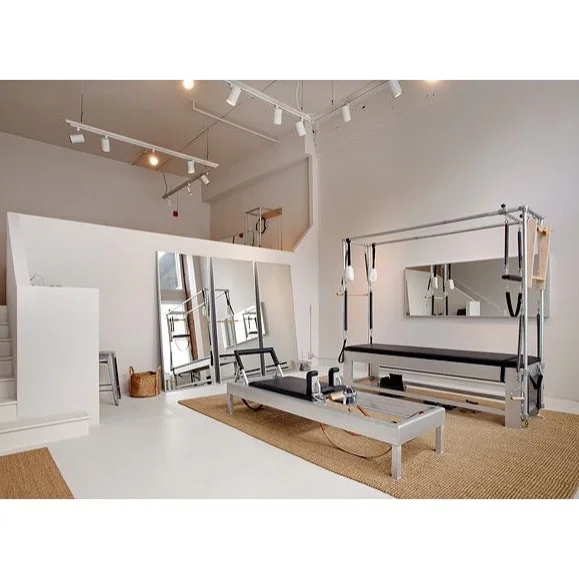Contemporary Pilates also called Modern Pilates or Clinical Pilates, is strongly influenced by modern movement & physiotherapy rehabilitation techniques. There is a large focus on understanding anatomy & the scientific reasoning behind movement & exercise. Most of the original Pilates exercises are still used or modified to further assist the client. Often there are a lot of 'pre pilates', physiotherapy or fitness inspired exercises added into workouts.
There's no set order to follow in each workout, however classes & private sessions are sequenced so the body is challenged in all of the different movement planes such as supine (on the back), quadruped (all fours), prone (on the front), side lying (on the side) , seated (sitting upright) & generally always standing, to finish a class. The original Pilates principles are still followed such as centering, concentration, control, precision, breath & flow.
The Pilates equipment is generally very modern & the spring tensions are much lighter. Contemporary Pilates often uses additional props such as foam rollers, thera bands & exercise balls to assist or challenge an exercise. The equipment used is usually the: reformer, mat, cadillac, wunda chair, ladder barrel, tower, spine corrector, magic circle & hand weights.
Some of the leading internationally recognised schools of contemporary Pilates such as Polestar Pilates & BASI require Instructors to do comprehensive training of up to 600+ hours which includes observation, self mastery & teaching. Exams are usually both theory based & practical & are always examined by an experienced teacher trainer. Other contemporary training programs might be shorter & less intensive & don't always provide an exam.
Classical Pilates also referred to as Authentic Pilates, or Pure Pilates follows the Pilates system exactly the way it was taught by Joseph in the 1920s. It always follows a precise set of exercises in an order that must always be followed. This system has been passed down by the Pilates elders who trained with Joseph Pilates. Exercises do get modified slightly if a client is unable to perform them fully but the general flow & sequence must always be followed.
The classical equipment specifically designed for the full repertoire of Pilates exercises often has heavier springs & there are additional pieces of equipment such as: the guillotine, foot corrector, baby chair, high chair & pedo pull. Often the workout starts on the reformer, then the mat & is usually finished with appropriate extra exercises on some of the other pieces of equipment such as: the cadillac, wunda chair, high chair, ladder barrel, baby chair & the tower.
The Classical system usually follows a basic level, Intermediate level, advanced level & then super advanced sequence. There is a focus on the transitions between exercises particularly on the reformer & mat which creates extra challenge, control, & flow between each movement.
One of the most recognised Classical training programs is with Romana's Pilates. Romana Kryzanowska was a student of Joseph, she was chosen to continue his legacy. Apprentices are required to undergo intensive training for at least a year where they must complete over 60+ hours a month of apprentice hours. They are closely guided & mentored by experienced instructors & examined by a Level 1 master trainer. Exams are both written & practical. There are specific guideline requirements before being accepted on to this prestigious program.




